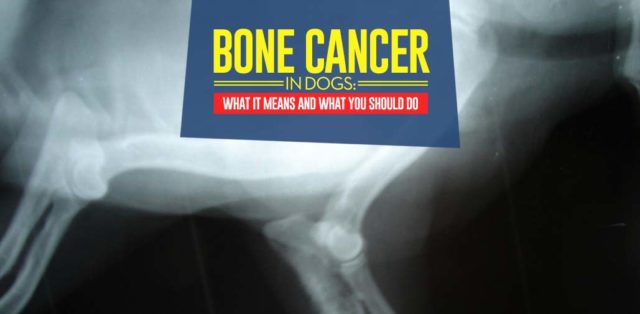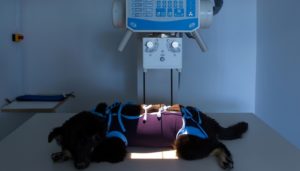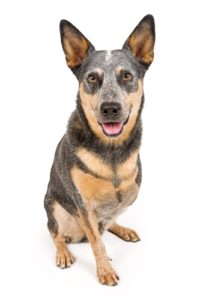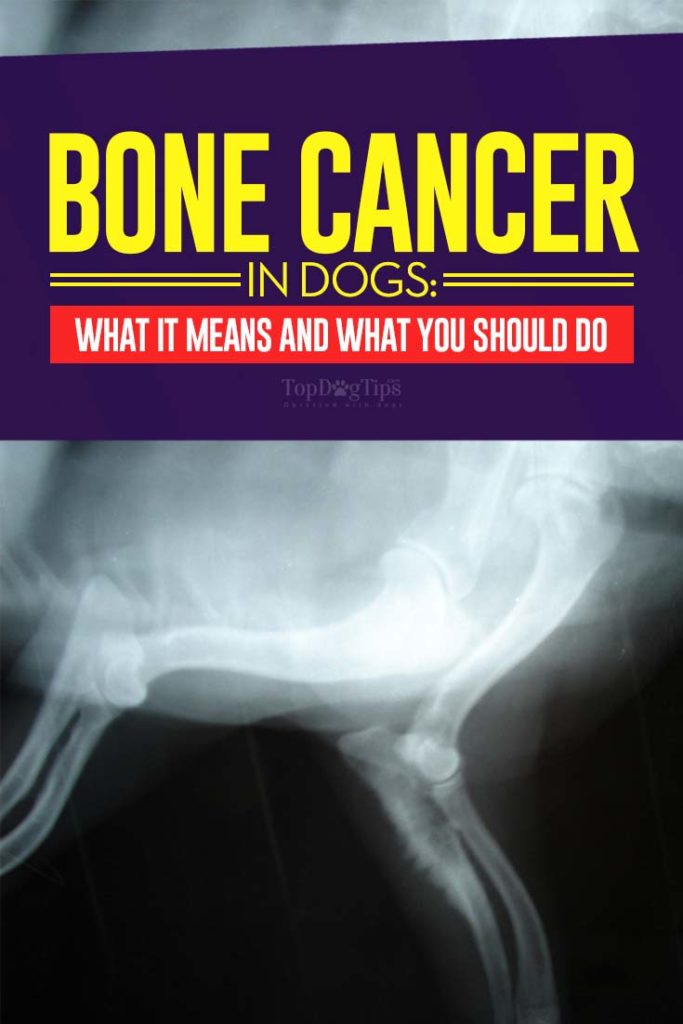
Table of Contents
Dogs are susceptible to many serious diseases, just like humans. Some breeds are more predisposed to certain illnesses than others. Unfortunately, no matter what breed you adopt, some serious health conditions, like bone cancer in dogs, could be in your future.
Your new pet is a living being that you’ll have to take care of for the next 10-15 years, through better and through worse. And as with people, the “worse” with dogs can be quite bad, especially when it comes to diseases.
And one of the toughest and most unpleasant kinds of diseases is what we’re going to talk about here – bone cancer in dogs. There are several different types of bone cancer in dogs, but each of them has their own risks and treatments.
Let's discuss each type of dog bone cancer, the breeds that are most susceptible, and the treatments available for bone cancer in dogs.
ALSO READ: How to Extend Your Dog’s Life by Assessing Body Condition
Bone Cancer in Dogs
what it means for your dog and what to do
 Types of Bone Cancer in Dogs
Types of Bone Cancer in Dogs
1. Osteosarcoma (OSA)
At the top of the list, Osteosarcoma is the most prevalent type of bone cancer in dogs. Responsible for 85% of all malignancies of a dog’s skeleton, OSA happens mostly in bigger dog breeds. It can also occur in smaller dogs and cats.
The breeds that have the highest risk of OSA include:
- Irish setter
- Doberman Pinscher
- Great Dane
- German Shepherd
- Golden Retriever
- Rottweiler
Osteosarcoma also strikes mostly middle-aged and older dogs, with the median age being around 7 years. Of course, OSA has a lot of sub-types with their own different characteristics – rib Osteosarcoma, for example, tends to occur in younger dogs as well, with a median age of 4.5 – 5.4 years.
Appendicular Osteosarcoma (bone cancer of the limbs) is the most popular sub-type of OSA. It occurs in 75% – 85% of all dogs suffering from OSA.
2. Chondrosarcoma (CSA)
A distant runner-up to OSA is Chondrosarcoma. The second most prevalent type of bone cancer in dogs, CSA is responsible for 5% – 10% of bone cancer cases in dogs. It is a cartilage type tumor, and it’s usually not as malignant as OSA – but, it’s still very dangerous.
Chondrosarcoma occurs most often in flat bones such as the ribs or the skull. However, it can appear in the limbs as well. As with OSA, middle-aged or older dogs of bigger breeds seem to be more predisposed. The symptoms of CSA are also similar to those of OSA. The tumor is best removed, with Chemotherapy not shown to be very effective.
3. Fibrosarcoma (FSA)
A rare type of bone cancer in dogs, Fibrosarcoma occurs in less than 5% of all bone cancer cases. It happens most often in the axial skeleton (jaw bones, facial bones, ribs, and vertebrae). It can occur in the limbs as well. Surgical resection and amputation are the best ways to deal with FSA.
There are two types of FSA – central FSA and parosteal FSA. FSA is also often mistaken for a specific type of OSA – the Fibroblastic Osteosarcoma.
4. Hemangiosarcoma (HSA)
About as rare as FSA, Hemangiosarcoma happens in less than 5% of all bone cancer cases in dogs. Unlike OSA and CSA, HSA occurs more frequently in younger dogs. HSA can happen either in the axial skeleton or in the limbs.
It also has a much higher chance of developing metastases, so extensive testing before surgery is strongly advised (heart ultrasound, for example). Amputation and chemotherapy with doxorubicin (adriamycin) type drugs are usually the best treatment options.
5. Multilobular Osteochondrosarcoma
Among the rarest types of bone cancer in dogs is the Multilobular Osteochondrosarcoma. It develops mostly off the periosteum of the bone (the lining of the bone) and can usually occur on the skull, pelvis, ribs, or hard palate.
The treatment and prognosis of the tumor depend entirely on its location. Computed tomography scans are required to determine the exact severity of the cancer.
6. Primary Joint Tumors or Synovial Cell Sarcomas
This type of bone cancer in dogs develops mostly in the joints, bursae, and tendon sheaths. There are two types of Synovial cell sarcomas – epithelioid and spindle.
There are a lot of other types and sub-types of bone cancer in dogs – malignant fibrous histiocytoma, histiocytic sarcoma, myxosarcoma, and synovial myxoma, OSA, FSA, CSA, HSA, liposarcoma, rhabdomyosarcoma and undifferentiated sarcoma just to name a few.
Here, we’ll mostly talk about Osteosarcoma (OSA), as it is the most popular type of bone cancer in dogs and a lot of the things that can be said about it, can apply to other of the bone cancer types. Needless to say, when it comes to having suspicions about bone cancer in your dog, you should immediately seek veterinary attention.
RELATED: 8 Cancer-Causing Dog Products (And How To Avoid Them)
Symptoms of Bone Cancer in Dogs
 The symptoms of bone cancer in dogs can vary not only based on the different types of cancer but mostly on its location. Different bone cancers occurring on the same spot/limb will have more or less the same symptoms.
The symptoms of bone cancer in dogs can vary not only based on the different types of cancer but mostly on its location. Different bone cancers occurring on the same spot/limb will have more or less the same symptoms.
Things to look out for include:
- Lameness when the tumor is affecting one of the dog’s limbs. It’s a relatively obvious symptom that’s hard to miss but can often be attributed to a light trauma.
- Pain in the affected area, be it a limb, the skull, or the body. Unlike cats, dogs tend to be expressive when it comes to physical discomfort and pain, so as long as you don’t ignore their cries, you should be able to notice these symptoms.
- Swelling at the place of the tumor. A fairly obvious symptom, swelling can have multiple causes different than bone cancer, but either way, it’s never a symptom that should be left unattended.
- A mass growth or a painful inflammation is also a possibility with bone cancer.
- Dysphagia, or difficulty in swallowing, can occur in bone cancers of the skull.
- Exophthalmos, or bulging of the eye anteriority out of the orbit, is another possible symptom of bone cancer in the dog’s skull.
- Pain on opening of mouth or other facial deformities can also be symptoms of bone cancer in the skull.
- Sneezing, difficulties in breathing, nose bleeds, or other nasal discharges are common symptoms of bone cancer in dogs when the cancer has occurred in or around the nasal cavity.
- Fracture or the bone. A symptom that occurs in later stages of the cancer, fractures are a serious problem that can be the result of bone cancer.
- Tiredness or anorexia. While most dogs are vocal about physical pain or discomfort, others can express it through depression and tiredness. A lack of appetite and a bad, apathetic mood is always a bad sign in dogs.
RECOMMENDED: 3 Dog Food Diets To Prevent Diseases (Based On Science)

Causes of Bone Cancer in Dogs
To the current knowledge of geneticists, gender or genetics don’t have a proven link to most bone cancers in dogs, including Osteosarcoma. Nevertheless, bone cancers are more popular in medium and large dog breeds, and they also occur more frequently in adult and older dogs.
Factors such as chemical carcinogens, ionizing radiation, foreign bodies like metal implants, internal fixators, and bone transplants, or bone traumas like blunt bone injury are known to increase the risk of bone cancers like OSA or CSA.
Some scientific experiments with dogs are also recorded to have inadvertently led to bone cancers – things such as plutonium injections, for example. While bone cancer doesn’t seem to be genetically transmitted, geneticists have found examples of aberrations of the p53 tumor suppressor gene in dogs with Osteosarcoma.
DNA viruses such as the polyomavirus and the SV-40 virus, as well as RNA viruses like the type C retroviruses, have also been found to trigger OSA. Growth factors like cytokine or the hormone signaling systems are also documented to have occurred in relation to bone cancer in dogs.
Diagnosis of Bone Cancer in Dogs
A proper diagnosis of bone cancer is vital in order to catch it in its earliest stages. Always make sure that your veterinarian runs all the necessary tests in order to not miss anything. The tools and tests that you can expect your veterinarian to employ include:
- an X-ray to view the mass of cancerous cells – is often used from several different angles to get a clear picture of the tumor
- a biopsy of the cancer cells to determine their type and characteristics
- fine needle cytology
- thoracic auscultation detects intercurrent cardiopulmonary disorders
- blood tests
- bone scans
- bone survey radiography
- CAT scans
- lateral and craniocaudal radiographic projections
- rectal exam to rule out the presence of a primary tumor
RECOMMENDED: 3 Canine Diseases Linked To Dog Food
Treatment of Bone Cancer in Dogs
 As unfortunate as it is, it’s important that you are aware of the treatments of bone from the start. With a bone cancer diagnosis, the chances for your dog aren’t high. Even with proper and successful treatment, the dog’s life is often changed drastically by the treatment itself and the numerous side effects it can have.
As unfortunate as it is, it’s important that you are aware of the treatments of bone from the start. With a bone cancer diagnosis, the chances for your dog aren’t high. Even with proper and successful treatment, the dog’s life is often changed drastically by the treatment itself and the numerous side effects it can have.
Try to manage your expectations accordingly. Your dog will likely need all the support you can muster. With that out of the way, there are 3 main treatment options after a bone cancer diagnosis in dogs:
1. Chemotherapy
This option is rarely stand-alone. Chemotherapy usually accompanies the other two surgical treatments when it comes to bone cancer in dogs. Especially for advanced bone cancer, chemotherapy simply isn’t enough to take care of the disease in an efficient manner.
Additionally, as we mentioned above, certain bone cancers aren’t really treatable with chemotherapy at all, Chondrosarcoma (CSA) being a prime example of that, as well as the second most popular type of bone cancer in dogs after OSA. Nevertheless, in most cases, chemotherapy is a vital part of your dog’s treatment as it prevents the further spreading of the disease in other areas of your dog’s body (the lymph nodes, in particular).
 2. Amputation
2. Amputation
Always an unfortunate option that no one wants; oftentimes time, amputation is simply necessary for limb bone cancers like the Appendicular Osteosarcoma (OSA). For forelimb lesions, a complete fore-quarter amputation is usually strongly recommended. Similarly, coxofemoral disarticulation amputation is usually recommended for hind leg lesions.
3. Limb-sparing surgery
A much more preferable option than amputation, limb-sparing surgery isn’t always possible since it won’t have a significant enough effect on the diseases. Nevertheless, sometimes it is an option – a complicated, difficult, and expensive option, but an option nevertheless.
In essence, limb-sparing surgery is a procedure where the diseased part of the bone is removed and is then replaced with a metal implant, a bone graft from another dog, or a combination of the two (otherwise known as an “allo prosthetic composite”).
The cases where a limb-sparing surgery can and should be performed include:
- when the dog suffers from other pre-existing neurological or orthopedic diseases
- when the primary tumor is confined only to the bone and hasn’t extended throughout the rest of the limb
- when there is an absence of pathologic fracture
- when cancer involves the soft tissues and firm, soft tissue mass around the bone in a less than 360-degree arc
- when tumors form in the distal radius or the ulna (the “wrist” of the frontal leg)
There are various methods of limb-sparing surgery – pasteurized or irradiated autografts, ulna transposition autografts, cortical allografts, and stereotactic. Most of those methods include a fusing of the limb’s wrist once the allograft, autograft, or metal implant is inserted into the hollow plate that’s replaced the bone.
These procedures tend to be somewhat restrictive. The dog won’t be able to bend its wrist, but they still allow for a relatively normal movement of the limb and the dog itself, including running. In some cases, an allograft, or a fusion, of the wrist isn’t even required. This usually occurs with tumors of the ulna.
SIMILAR: Cushing's Disease In Dogs – Symptoms, Diagnosis and Treatment

Living and Management of Bone Cancer in Dogs
Depending on the treatment options that’s been used, the dog’s life can be changed in various different ways. An amputation is an instinctively striking option, but keep in mind that even with an amputated limb, a dog can still have a happy life with its family’s support and love.
Proper limb-sparing surgeries can affect the dog’s life to an even smaller degree, potentially only limiting some of the movements of its one limb. Chemotherapy also obviously has a lot of side effects, as it does with people.
Regardless of the specifics, most of the dog’s activities will be restricted shortly after the treatment.
Following surgery, you will likely be prescribed some pain and anti-inflammation medications. Ongoing monitoring of the dog’s health is necessary throughout the rest of its life. Regular chest X-rays to find out a possible remission, a monitoring of the white and red blood cell levels and other monitoring may be needed depending on what your veterinarian recommends.
Prognosis for Dogs with Bone Cancer
As we mentioned above, it’s very important for the dog owner to adjust his or her expectations accordingly upon the diagnosis of bone cancer. Most bone cancers in dogs are very dangerous and have a high mortality rate. With Osteosarcoma, in particular, the average survival rate after surgery and chemotherapy is around 1 year.
 Obviously, this is an average and doesn’t apply to any individual dog.
Obviously, this is an average and doesn’t apply to any individual dog.
Also, any type of prognosis is highly dependent on the type of cancer and its location. Additionally, the age and breed of the dog tend to matter as well. Dogs aged between 7 and 10 years have a significantly higher survival rate than younger and older dogs with most bone cancers, including OSA and CSA.
With other bone cancers, such as Axial Osteosarcoma, for example, the medial survival rate is only around 4 and 5 months because a complete surgery in that area is impossible. Survival rate also depends on the specific type of bone cancer that your dog has and the probability of re-occurrence with the disease.
So, while the overall prognosis may be grim, keep in mind that it is highly dependent on the dog’s and the disease’s specifics, as well as those statistics don’t’ necessarily apply to the individual. Try to observe any possible symptoms in your dog so that you can catch the disease early on, and make sure that you find an adequate veterinarian to diagnose and treat your pet. Follow the vet's recommendations and offer your pet all the support and post-treatment care you can.
READ NEXT: 15 Cheap Ways To Prevent Most Common Health Issues In Dogs
Pin and share with other dog owners:













